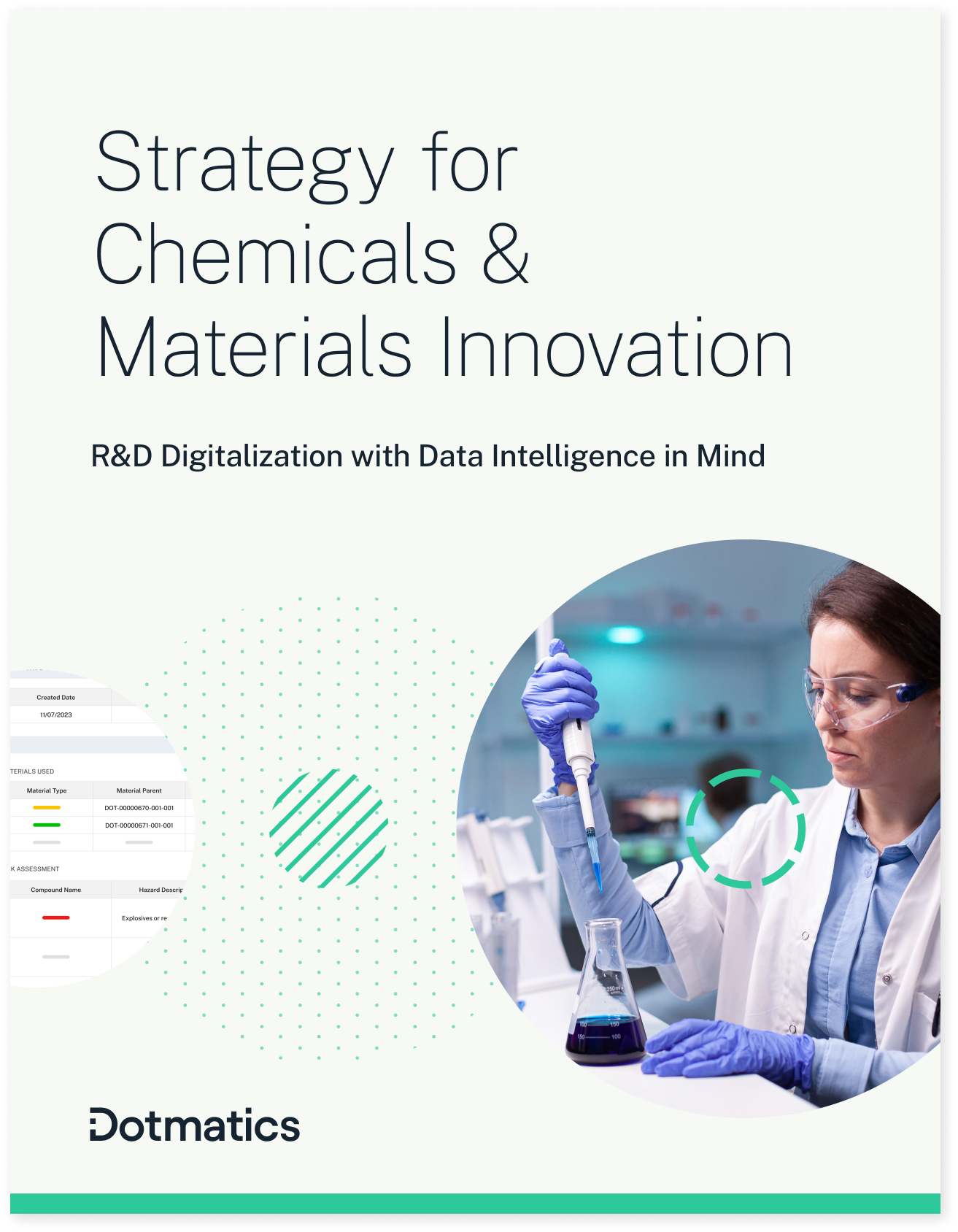Can One ELN System or Material Testing LIMS Fully Support Chemicals & Materials Data-Driven R&D?
Building an R&D infrastructure to support chemicals and materials innovation is not an easy task. Without question, chemicals and materials workflows and data types are not as standardizable as those often seen in the life sciences. (We explored this topic at greater length in the Lab Manager article, “Lab Data Automation for Chemical and Materials R&D.”)
However, even across specialty companies that are creating diverse products and formulations, there are some broad consistencies. We’ve seen this firsthand while helping our Chemicals and Materials customers digitize their labs and support data-driven R&D for a wide-range of products, including specialty chemical and materials (such as polymers, catalysts, and alloy metals), agricultural solutions, personal care products, flavors and fragrances, and more.
Even amongst these vastly different customer types, five consistent needs, or workflow steps, stand out: (1) Formula/Components Management, (2) Experiment Planning, (3) Process Capture, (4) Sample Testing, and (5) Data Analysis. In many cases, companies rely on several different specialty systems to meet these needs. But this approach tends to isolate data, slow workflows, and hamper collaboration. Can a single lab platform support all these core needs? Yes, but it depends on how robust and flexible that system is.
Blurring the Lines Between LIMS, ELN, and SDMS
Let’s take a closer look at the five needs common across diverse Chemicals and Materials R&D teams. An open and agnostic R&D platform like Dotmatics, which prioritizes both data interoperability and workflow flexibility, can help teams address these core needs, facilitating collaborative innovation without constraining the scope of a team’s research initiatives.
1. Formula/Components Management
A first essential need for all R&D teams is to assess and manage the components of the chemicals or materials they’re pursuing, whether those are fuel additives, high-performance tires, better smelling perfumes, pest-resistant seeds, etcetera. While specific needs may differ from team to team and company to company, ingredient management is an essential aspect of all Chemicals and Materials R&D. Researchers need a solution that not only records batch information and physical properties, such as density, pH or domain-specific properties, but also tracks other pertinent information, such supplier details, cost, origin-traceability data, inventory levels and locations, approvals for new ingredients or hazardous materials, etcetera.
2. Experiment Planning
Researchers need to plan the experiment that they are about to carry out, building upon their experiences in previous experiments. They will decide how many different materials they will produce or formulate, how many samples of each will be required, the time points at which the samples will be collected, and the quantities of materials they should allocate to use. Additionally, they will need accurate accounting of all this information so that they can check whether the designs were adhered to, and if they differed, the researchers will need to be able to specify exactly how they differed.
3. Process Capture
Once a plan is put in place, scientists will put it into action, using the ingredients from the design and combining them in some way to create the new materials. Scientists not only need to keep close track of the materials they used, but they also need to capture the process of how those materials were mixed, shook, heated, cooled, filtered or manipulated to create the new materials. This procedure is akin to having ingredients and a recipe to bake a cake. Without knowing the recipe, the outcome of processing the ingredients can be vastly different, impossible to repeat, and less likely to have the properties required of the final materials
4. Sample Testing
It is estimated that 80% of decisions in Chemical and Materials R&D are based on insights made by linking structural properties to test data. In order to evaluate how well materials perform, researchers need to first connect their samples to their specific formulations, and then they must have tools to help manage samples, log and track analysis requests, capture results, and search for and display sample, test, and result data in an actionable way.
5. Data Analysis
Collating all the data from the previous steps is essential to data-driven innovation and a key precursor to leveraging artificial intelligence and machine learning to incrementally improve existing products. While the products that different companies are working on may vary widely, all teams face similar challenges to handle large varieties and volumes of cross-domain data, establish a single source of truth, and let researchers across different groups and locations share data and insights, while still using their preferred workflows and specialty tools. Keeping data interoperable and FAIR is essential to the powerful data querying, analysis, and application needed for data-driven R&D.
A Unified Chemicals and Materials Solution
By supporting each of these five core needs, Dotmatics helps remove the burden of maintaining numerous single-purpose systems and facilitating data exchange between them. Instead, it simplifies the IT infrastructure and provides a complete and flexible solution to help Chemicals and Materials R&D teams create data-driven workflows.
In our next blog, we will look at how Dotmatics facilitates diverse Make-Test-Decide workflows in Chemicals and Materials Science Lab Experiments.
Next Steps
Learn more about the ways the Dotmatics Chemicals and Materials R&D Solution helps organizations integrate existing data sources and implement workflows that support their complex R&D processes.




